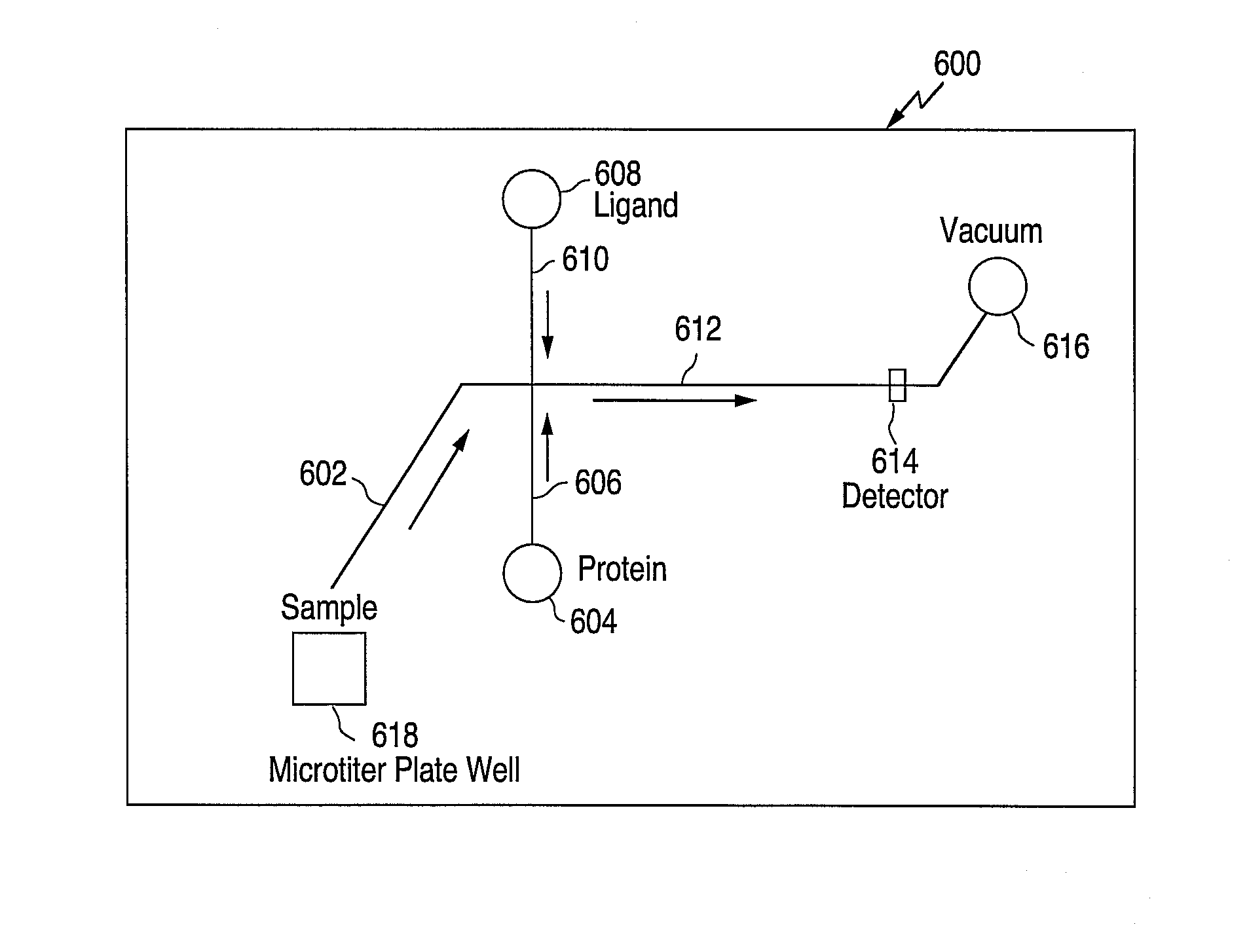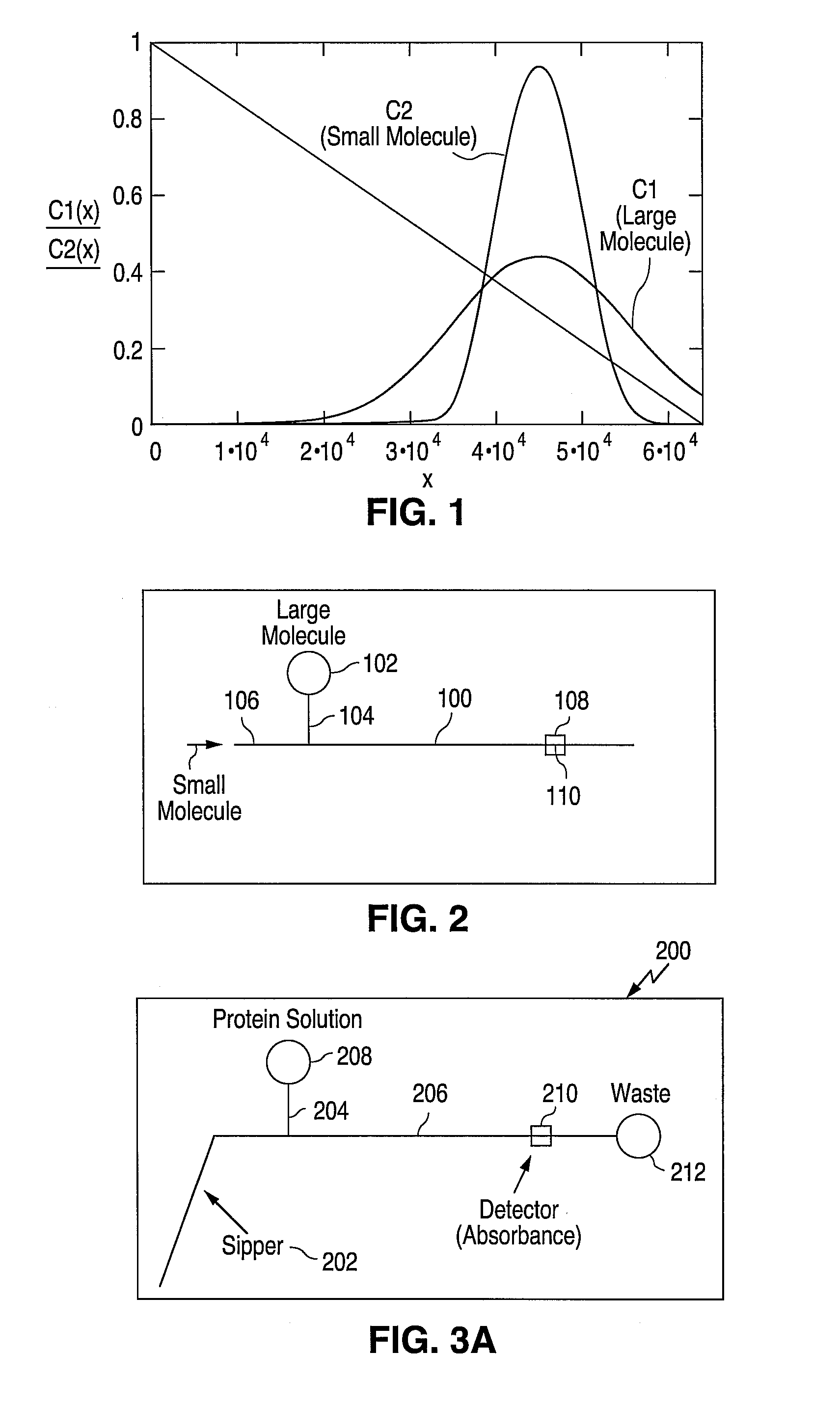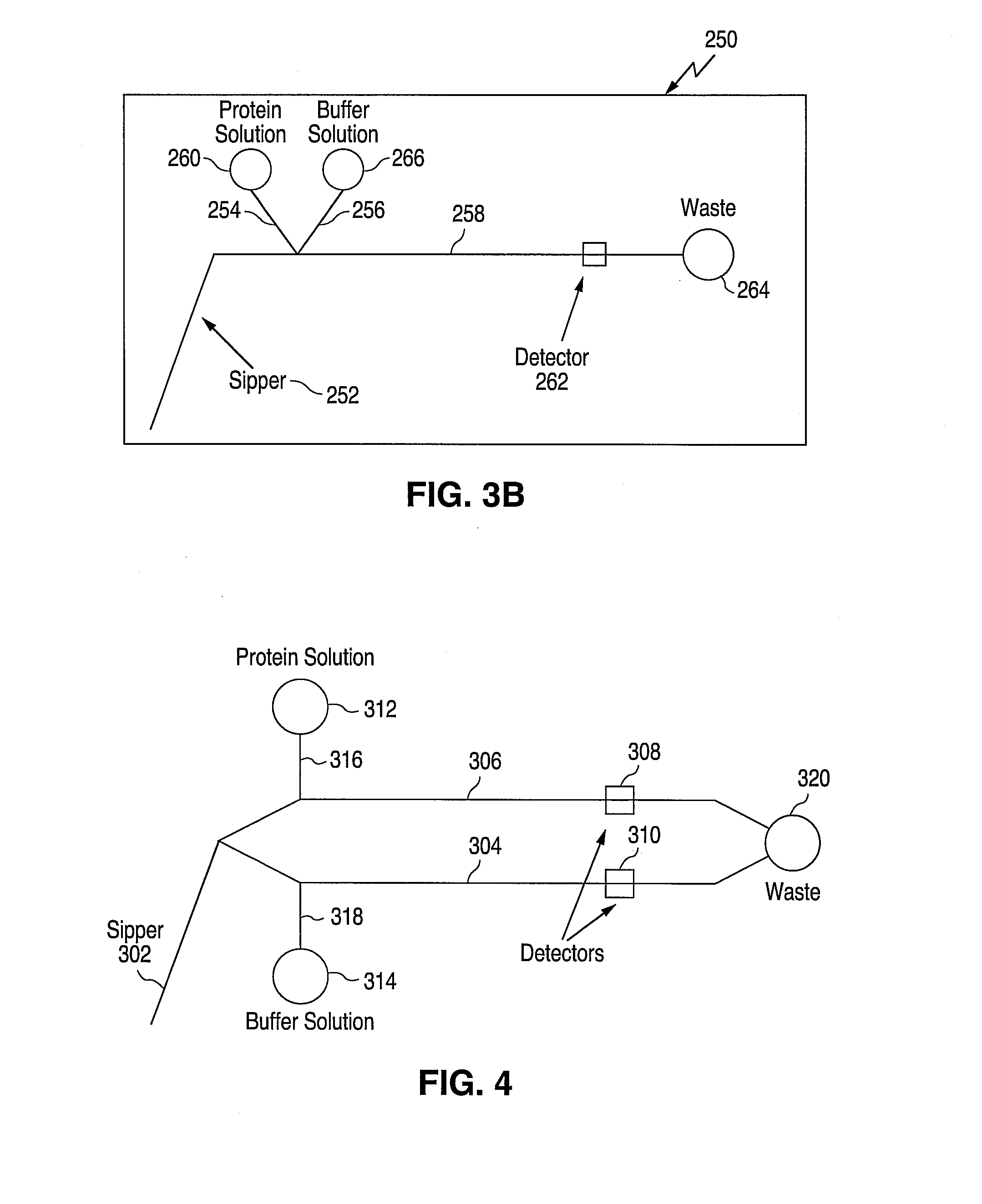Methods and Systems for Monitoring Molecular Interactions
a molecular interaction and molecular technology, applied in the field of methods and systems for monitoring molecular interactions or associations, can solve the problems of not giving rise to a detectable difference, requiring additional time and labor-intensive steps, and complicated measurement of the interaction or reaction process
- Summary
- Abstract
- Description
- Claims
- Application Information
AI Technical Summary
Benefits of technology
Problems solved by technology
Method used
Image
Examples
example 1
Microfluidic Device Design & Instrumentation:
[0098] The microfluidic device design used was a SP299A single sipper chip (Caliper Technologies Corp., Mountain View, Calif.). The microfluidic circuit of the SP299A device is shown in FIG. 6 and consists of a sipping capillary (“sipper”) (not shown) in fluidic connection with a main channel 502 and two side channels 504 and 506. The sipper is physically attached to the chip at point 512.
[0099] The instrument used for this experiment was a Caliper 100 single sipper system (Caliper Technologies Corp., Mountain View, Calif.) (not shown). The instrument included an x-y-z robot that was used to present the microtiter plate to the sipper for sampling reagents stored in the microtiter plates.
[0100] In addition, fluorescent optics (i.e. light source, photodiode, detection / collection lenses, filters etc.) were used to detect samples in the main channel of the device. For this set of experiments, the excitation / emission ...
example 2
Off-Chip Competitive Binding Assay
[0118] This example summarizes how one would implement an off-chip competitive binding assay based on differential Taylor-Aris dispersion of bound and unbound molecules.
[0119] To perform such an assay, one could use a chip design as illustrated in FIG. 11. Chip 600 includes a sipper 602, two side channels 606 and 610, a main channel 612, reservoirs 604 and 608, detection region 614, and waste 616. External to the chip is a microtiter plate well 618.
[0120] As is illustrated in FIG. 11, both protein and ligand are delivered continuously to main channel 612 from reservoirs 604 and 608 and side channels 606 and 610, respectively, while a small molecule that is being assayed for competitive binding to the protein is drawn up from a microtiter plate well 618 through the sipper 602 in slugs that are separated by buffer spacers. The ligand is known to bind to the protein of interest, and is fluorescently labeled.
[0121] As the ligand is the only fluoresc...
PUM
 Login to View More
Login to View More Abstract
Description
Claims
Application Information
 Login to View More
Login to View More - R&D
- Intellectual Property
- Life Sciences
- Materials
- Tech Scout
- Unparalleled Data Quality
- Higher Quality Content
- 60% Fewer Hallucinations
Browse by: Latest US Patents, China's latest patents, Technical Efficacy Thesaurus, Application Domain, Technology Topic, Popular Technical Reports.
© 2025 PatSnap. All rights reserved.Legal|Privacy policy|Modern Slavery Act Transparency Statement|Sitemap|About US| Contact US: help@patsnap.com



